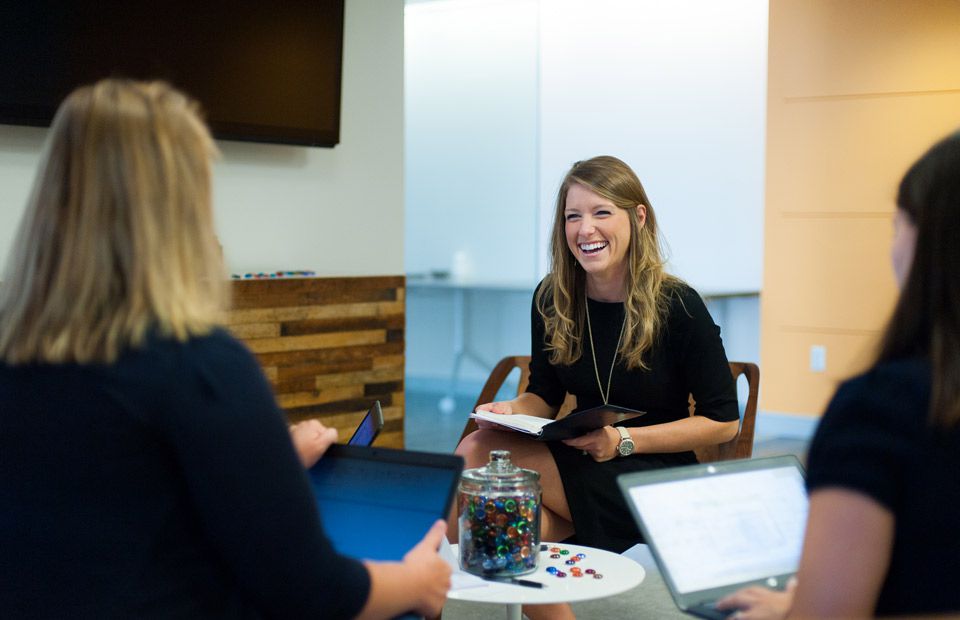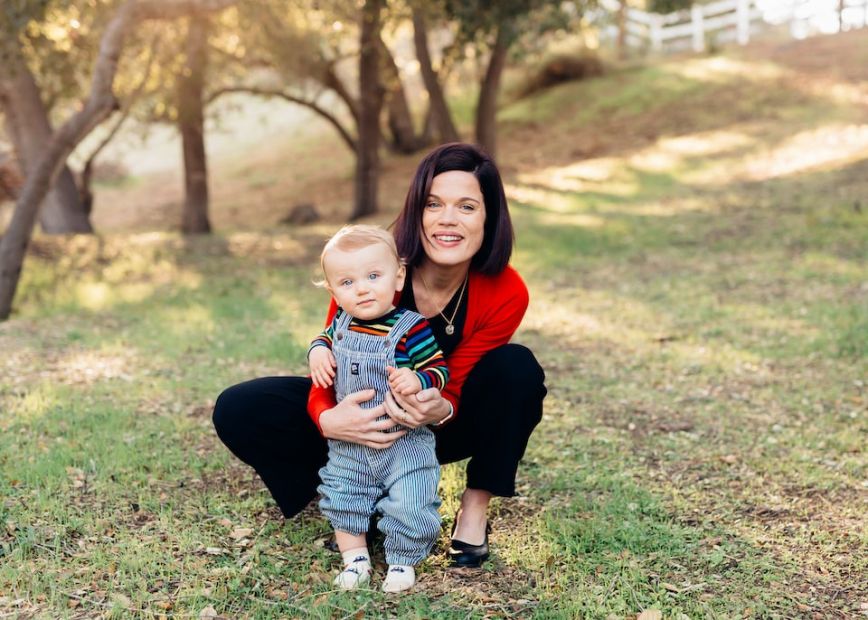Boardrooms don't have to be
boring. Here are some ways you can run your meetings strategically but authentically.
Once upon a time, I worked for a woman who was known as a star meeting facilitator. CEOs would call left and right, asking her to organize strategy sessions and management off-sites, and she would prepare for these sessions meticulously and down to the last detail.
Frequently, as I helped her
prep for a meeting, she would remind me in an ominous voice, “Romy, if the room is too hot or too cold, people are going to blame you for it.”
While room temperature is sometimes tough to control, her broader point stands: If you’re going to lead a successful meeting (
even if you're not a natural-born leader), you must think constantly about the participants. What’s going to make them feel good about the experience? What's going to keep you from running an unproductive meeting that's inefficient and a waste of time?
Table of Contents
What Makes a Successful Meeting?
How can you make sure everyone is engaged and heard? How do you make your participants a part of the meeting, instead of just an audience? How much technology is too much technology?
One of the major lessons that came out of Covid is that as humans we crave interaction with other humans. We can use technology for every part of work, but that won't replace the need (or desire) for a meeting.
Meeting in person is a great way to share your vision, create value and influence, and motivate other team members. And meetings that are run effectively are critical for successful collaboration and productivity.
Most importantly, effective meetings can speed up the process of delivering an outcome and tangible results. But, to do all of this, it's essential that people leave with clarity about their next steps, confidence in their ability to complete the tasks within the agreed-upon timeframe, and the resources to do the job well.
1. Have a Clear Meeting Objective
There's a reason there are so many memes saying, "This meeting could have been an email." It's because so many organizations have adopted a culture that focuses more on meetings and less on why we're meeting in the first place.
Time is valuable and should only be spent on things with a clear "why" behind them. Here's a quick way to help you filter between meeting and email:
When to Make the Meeting an Email
- Minor updates
- Deadlines and status updates
- Private feedback
- General housekeeping
- Task assignments
When to Make the Meeting a Meeting
- Project planning
- Creative brainstorming
- Making a decision
- Mapping out a workflow
- Solving a problem
- Setting a goal
- Clarifying details of a project
Now that you've decided you need to make this a meeting, start by ensuring you have a clear objective.
- What's the point of the meeting?
- Is this a routine meeting like your Monday morning standup that repeats each week?
- Is this a strategic meeting focused on solving a specific problem?
- Am I sure this meeting needs to be a meeting?
Regardless of the type of meeting, you still need an objective! Make sure everyone knows what you’re there to accomplish. If you can come in with a single item you want to achieve and then achieve it, everyone will leave feeling good about the meeting.
Meeting Objective Examples:
- Present the results from X project and decide the next steps
- Brainstorm revenue opportunities for Q2
- Present a software integration tool and how it will benefit the team and solve bottleneck issues
- Discuss a product launch plan and rehearse the presentation
2. Pick the Right Participants
Too many meetings invite too many participants. Start with an initial list of meeting attendees and then start to narrow it down. Try to keep the meetings to only the people who really need to be there and whose perspectives add real value—everyone else can review your post-meeting recap if they need it.
An added bonus is that you're saving time for the employees who don't need to attend in person. This allows them to spend their time on more essential items. One of the best ways to increase team
productivity is to be mindful of how much time they are spending in meetings.
3. Pick Your Technology + Learning Style
Ask yourself, what is the key functionality that I need for my technology? Do you need to share a screen? Collaborate on a document together?
Research says that 55% of communication is
body language, while another 38% is
tone of voice—all of which is necessary to create a communal atmosphere during a meeting.
The other thing you will want to consider before your meeting is the
different learning styles of the participants. Some are audio learners, while some are visual. If you're going to share data, make sure you have visual examples to help communicate your point faster.
4. Assign Pre-Work
Another key to running an effective and successful meeting is assigning pre-work to the participants. It can be really daunting to show up to a meeting and get asked big questions that you haven't had time to consider ahead of time. Plus, that's another way we waste time in meetings since it requires circling back.
Instead, assign pre-work. Send an email before you create your agenda and ask participants to provide key ideas, solutions, suggestions, or examples on the specific things you wish to discuss. Will there be a brainstorming session before the actual meeting? An effective team meeting usually requires some upfront effort.
- Dave: Present meeting objective
- Erin: Gives update on X data
- Jenna: Collects suggestions for Y team problem and presents during the meeting
- Ryan: Reserve the meeting room and prep the technology before the meeting
- Taylor: Report on X customer feedback
You might also ask them to send along project or status updates ahead of time. Not only will you get the participants thinking ahead of time on your topic which will save time in the actual meeting, but some of their information might be able to be included in the agenda—and therefore skipped altogether in the meeting.
If something can be typed up and shared that way vs. sharing in person, that's a win-win for making a meeting more efficient. Bad meetings are notorious for using time for things that "could have been an email."
5. Don't Forget Introverts
If there are going to be people in the meeting who are
less comfortable speaking up, think ahead of time about how you can structure the meeting in a way that gives everyone an equal opportunity for their voices to be heard, like a round-robin-style discussion. This means giving everyone five minutes to share an insight or experience they’ve had around the meeting topic.
Another idea is to create a communal space or document online where people can add their thoughts, insights, and suggestions before and after the meeting. Make your meeting inclusive and introvert-friendly with a few thoughtful considerations upfront.
6. Schedule Well in Advance—And Consider the Timing
Please don't be the person who schedules a meeting on short notice—and then also makes it on Friday at 4:30 pm. Schedule your meeting well in advance—we recommend at least three business days—and keep in mind the timing and time zones of the participants.
A lot of people will use Mondays and Fridays on their calendars for catch-up and organization, so we recommend trying to host your meetings on Tuesdays, Wednesdays, or Thursdays.
As for when to time your meeting, consider what the goal of the meeting is.
Research shows that the morning is the best time for meetings that require brainstorming, creative input, or strategy sessions. This type of thinking requires a type of mental energy that we have more of in the morning.
Once you settle on a day and time, send a calendar invite that includes all the details such as text in the invite or links to important documents like the agenda.
7. Create and Share a Clear Agenda Ahead of Time
A productive meeting always makes sure everyone knows what you're going to cover and in what order. It helps you keep the meeting on track, and gives your attendees a sense of inclusion in the process. They know the meeting's purpose, thanks to a clear agenda. We recommend making an agenda a regular part of your meeting routine, too.
Your agenda should include:
- Key talking points
- Meeting structure (e.g., when and for how long you plan to discuss each talking point)
- Team members/teams that will be in attendance
- What each team member/team is responsible for bringing to the meeting
- Any relevant documents, files, or research
Pro Tip: If you're looking for step-by-step advice on how to run an efficient meeting including templates for meeting agendas, check out our online course,
Building Efficient Meetings.
8. Keep It Short + Focused
Don’t bite off more than you can chew. Everyone has
lots to do and a short attention span. The briefer you can keep the meeting, the better. That means you need to keep the scope of the meeting highly focused.
We recommend 30-minute meetings, and if you have to go longer, don't go above 60 minutes because attention spans start to wander.
9. Book a Comfortable Room
...with chairs at the table for everyone.
Seriously. If people feel uncomfortable or are marginalized to “back row seats,” they're not going to be receptive—and what they’ll remember later won't be the great discussion, but how uncomfortable they felt.
10. Choose the Right Seat
If it’s a meeting that’s around a long table, as the leader, you should sit in the middle, not at the head. That way, you are closer to everyone, sending a message that says, “this is a discussion.”
11: Set Some Ground Rules Upfront
Set some ground rules such as:
- Let your team know what’s expected of them ahead of time—can people speak freely or will the team leader call on them when it's their turn to contribute?
- Ask people to mute when you’re not talking if joining virtually.
- Can people have their computers open?
- What other guidelines for interaction do you want to put in place? What about interrupting?
By setting some ground rules upfront, people will know what's expected of them. It will be less awkward if you need to point something out during the meeting.
12: Have a Designated Leader
Umm...who's running this meeting exactly?! No one should be wondering that because you sent an agenda ahead of time —but also because you've made it clear who the designated leader is. The designated leader is in charge of welcoming everyone and reviewing the agenda with your team.
The leader will also make it clear at the beginning of your question who you’re directing it to.
For example: Millie (say their name first), what did the feedback form conclude?
Make sure to keep the meeting inclusive by allowing everyone to participate.
13. Bring Bribes (Ahem, Snacks)
Everyone likes food. Especially not completely unhealthy food. Plus, it's a fun way to make the in-person meeting more enjoyable so if you have the time (and budget) to do it, why not?!
14. Start With Icebreakers
Start the meeting with some good
icebreakers in order to lighten the mood, jumpstart creativity, and encourage team bonding.
15. Phones Down + Heads Up
At the start, ask everyone if they wouldn’t mind setting aside their phones for the duration of the meeting so everyone can have a better experience.
16. Make Sure All Key Stakeholders Can Attend
Nothing's worse than assembling a group without a key decision-maker so nothing gets decided. Confirm RSVPs for everyone, and send a meeting reminder the day before.
17. Keep the Tone Purposeful + Light
Inject humor wherever possible. If you can find any way to make the meeting fun, people will thank you. But please, no dad jokes.
18. Stay on Track
If someone tries to take the meeting in another direction (and they always do), say, “That’s a great thought. Let’s add it to our parking lot to discuss later." A "parking lot" document is where you can "park" topics that come up that are not relevant to the meeting—but you might want to discuss them later.
19. Make Sure Everyone Is Heard
Pay attention to people's reactions to the discussion. Often you'll spot someone trying to speak up but missing their shot. If someone is being drowned out,
call attention to them and give them the floor.
20. Create a Safe Space for All Participants
Let's not forget psychological safety. This means the meeting creates an environment of trust and safety for sharing new ideas, challenges, etc. In fact, the most productive teams (and meetings) prioritize fostering an inclusive environment. To creative an inclusive meeting consider these tips:
- Greet each person by name as you welcome them
- Remind people of the ground rules
- Remain engaged in the conversation
- Follow up with people after the meeting to gather feedback
- Show appreciation for everyone's time and effort
21. Create Collaboration-First Meetings
Another thing that can only happen when people feel safe is collaboration. Here are a few things that will happen to encourage collaboration:
- Recognized achievements and accomplishments more than mistakes
- Focus on solutions more than ideas that aren't going to work
- Don't publicly blame people in front of the team
22. Assign "Jobs" to Participants Ahead of Time
Have you ever been to a meeting and had zero idea why, exactly, you were there? Not having a clear purpose for each attendee is the quickest way to kill team engagement.
Before the meeting, make sure everyone on the team has a job. For example, have one team member write down any questions that come up during a brainstorm, have one person take meeting notes or meeting minutes, have another teammate take notes on key discussion points, and have another manage the slide progression during the presentation.
The best jobs to keep workers engaged during meetings are:
- Interactive. The job should require everyone to contribute in real-time and interact with the meeting and other team members.
- Straightforward. If the job is too complex, your team may spend more time figuring out what to do than actually participating in the meeting.
- Frequent. Ideally, each team member’s job is something they need to do over the duration of the meeting so that they’re engaged from start to finish, rather than being assigned a “one and done” task.
Giving everyone a job allows them to take an active role in the meeting and makes them feel like part of the action, instead of forcing people to be passive listeners—which, we can all attest, is boring and tedious.
23. Take Group Notes on a Whiteboard
Here's an idea for a job to assign—note taker! If you jot down people’s thoughts, it gives them weight—and it also helps bring participants along to a conclusion or solution with you.
We recommend having two note-takers—one to jot down ideas related to the meeting topic and one to jot down "parking lot" ideas.
24. Clearly Define Deliverables and Next Steps
In order for a meeting to be effective, every person needs to walk out with a clear objective. The key things everyone needs to know by the end of the meeting are:
- Takeaways from the meeting
- Deliverables and next steps
- Who’s responsible for following up on each item or task
- When those deliverables are due
- When the next meeting or check-in will be
Reiterate how the group has successfully accomplished the task at hand. The mental “checking off the check-box” will make everyone feel good.
25. Hold One-on-One Meetings When Necessary
If you need to follow up with someone to provide feedback, ask additional questions, etc. then go the extra step to set up a one-on-one meeting.
26. Thank Everyone for Their Time
Saying thank you always matters. These days, time is the most precious commodity anyone has. Thank them for making time to join you.
27. End Five Minutes Early
If you can wrap up the meeting five minutes before the scheduled time, people will LOVE you. These days so many people’s schedules are so booked, they will be forever grateful if you give them five extra minutes to catch up on email or—God forbid—take a bathroom break.
28. Send a Meeting Recap
That day (or the next day at the very latest), send a physical copy of a meeting recap to the meeting participants. As we mentioned before, make sure it is clear who is responsible for what follow-up and by when. And if you need a follow-up meeting, send the invite for it immediately. It gives people a sense that the project is progressing.
Ultimately, it’s all about anticipation. If you can think through the purpose and the flow of the meeting in advance, and map out the participants’ experience, you are sure to have a meeting that is no less than mind-blowing. And if all else fails, check the thermostat!
29: Ask For Feedback
In your meeting recap, ask for feedback and input after the meeting. You can even create a survey if you want. Feedback is one of the best ways to refine your meeting process.
Folks will value your efforts to make sure meetings are effective, efficient, and leave people moving forward (instead of confused!).
30. Deal With Difficult People
If you're dealing with
toxic people who are taking over a meeting or not making it an inclusive place, deal with them right away.
Here are some tips on what to do. Remember to be a positive role model for the rest of the team.












